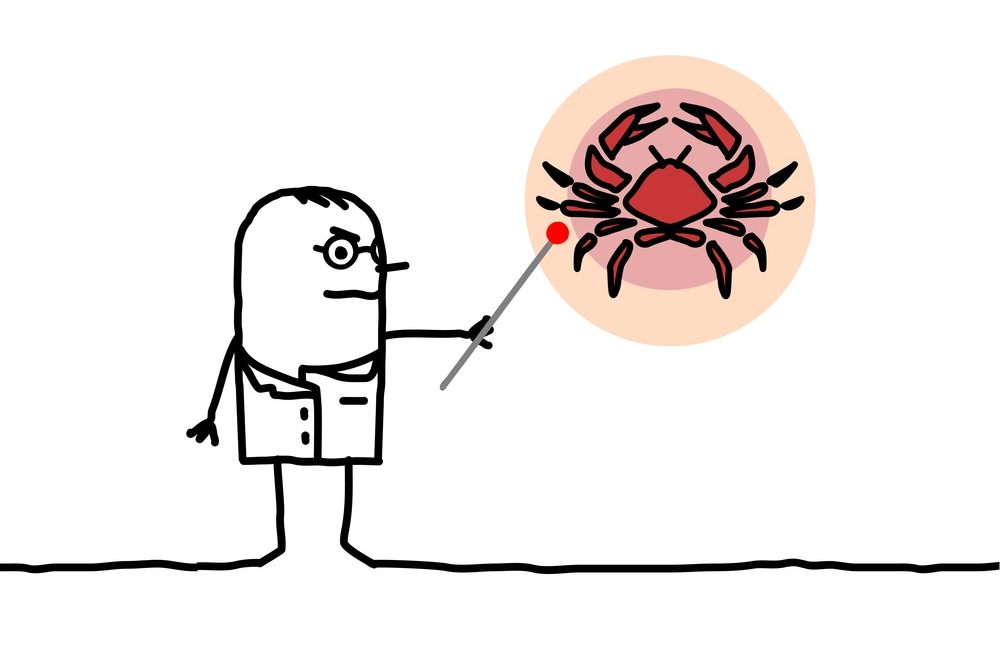Myelofibrosis is an unstoppable progressive disease which affects thousands and for which we have had no treatment. As result of fascinating directed experiments, the FDA has given the green light to the first therapy, and approved a type of drug that until today never existed. This is the story of ruxolitinib (Jakafi), the first JAK2 inhibitor for the treatment of any disease. Its invention demonstrates how research starting at the bedside and moving into the laboratory is the model for modern medical science.
Primary myelofibrosis (PMF) is a disease of older adults, which results in their bone marrow filling with scar like fibrous material. Caused by the growth of bone marrow stem cells, some authors consider it a cancer. Like cancer, there is genetic injury to a single cell, making it divide without stopping. Unlike cancer, it does not spread from the bone marrow or invade the bone itself.
Over years, the bone marrow becomes full of useless fibrous debris. Patients gradually become anemic and fatigued as the marrow begins to fail. To compensate for the struggling marrow, the body tries to manufacture blood in the spleen. In many patients their spleen gets so large that their stomach protrudes. Often the liver also becomes enlarged. Patients with PMF may get blood clots. They often develop itching of the skin, fevers, and weight loss. Eventually, the bone marrow stops and patients die of severe anemia. Occasionally, patients with PMF develop acute leukemia.
Up to now the only treatment was to give blood transfusions, antibiotics and sometimes blood thinners. If the spleen gets so big that a patient cannot eat, then it might be surgically removed. All of this is temporary and there is no cure. None of these therapies treat the cause of the disease.
The invention of ruxolitinib, shows how medical research has changed. Once, drugs like penicillin, aspirin or even chemotherapy drugs were found by accident. After discovering an interesting chemical, the “medicine” would be tried in hundreds of people with different diseases. Sometimes one was found which helped. To create ruxolitinib, the researchers went by a much more direct and organized route.
First, scientist doctors studied individual PMF patients and analyzed the fibrotic material that filled their marrow. They found a genetic mutation in the bone marrow of over 50% of these patients. Known as the Janus Kinase 2 (JAK2) gene, the damage is found on the ninth (9) chromosome. Researchers discovered that if this gene is injured it makes the cell more sensitive to chemical commands to divide. This results in increased cells in the marrow. If the JAK2 mutation occurs on a stem cell (mother cell), which forms fibrous cells, PMF will occur.
The doctors knew they needed to block the JAK2 gene. Several chemicals were developed for this purpose. Ruxolitinib is the first JAK inhibitor to be developed and approved. It blocks JAK2 and another related gene, JAK1. The drug was found to be safe in animals and thus was tried on humans with PMF.
It was been found in two early studies (COMFORT-I and COMFORT-II) that if a patient with PMF carried the JAK2 mutation they improved when given ruxolitinib. More then 40% of these patients had shrinkage of their spleens, and marked improvement in fatigue and itching. They had a general increase in their quality of life. To date ruxolitinib is not a cure. Nonetheless, it is a successful treatment in a disease for which we had no therapy. Continuing research will improve this first therapy and will result in more JAK2 blockers.
JAK2 mutations have been found in other illnesses including certain leukemia’s, red blood cell problems such as polycythemia, and elevated platelet disorders like essential thrombocythemia. Similar mutations have also been found in solid malignancies such as breast and lung cancer. It is hoped that JAK inhibitors, such a ruxolitinib, will have a benefit for these problems.
This is an exciting breakthrough for two reasons. We have the first treatment for PMF, which will give many patients hope. It is likely JAK2 inhibitors will be of benefit in other illnesses. As important, this is an example of elegant translational research. This method of investigation – from bedside to bench, and back, is the future of medical science. In the coming years hundreds more treatments and cures will follow this path.







6 Comments